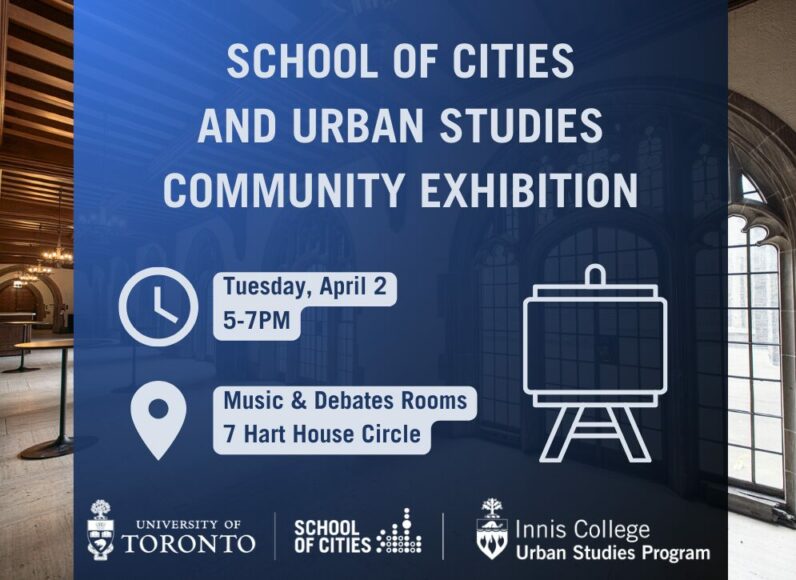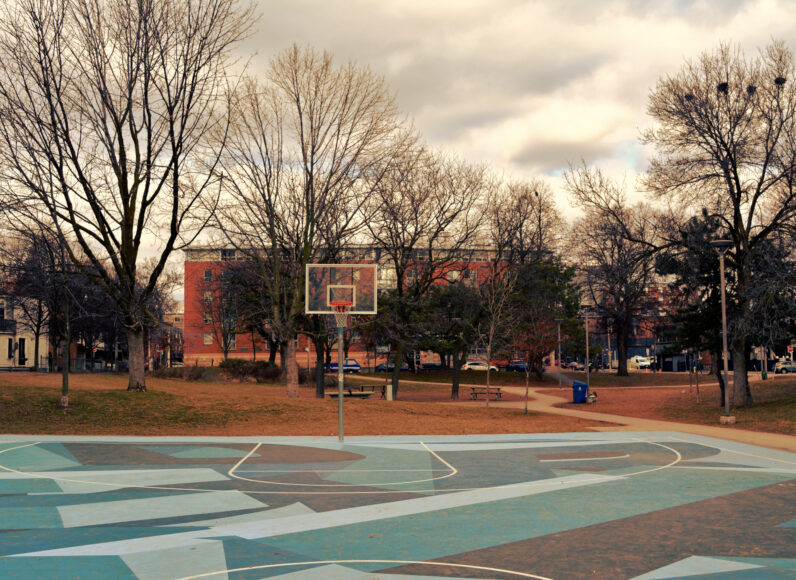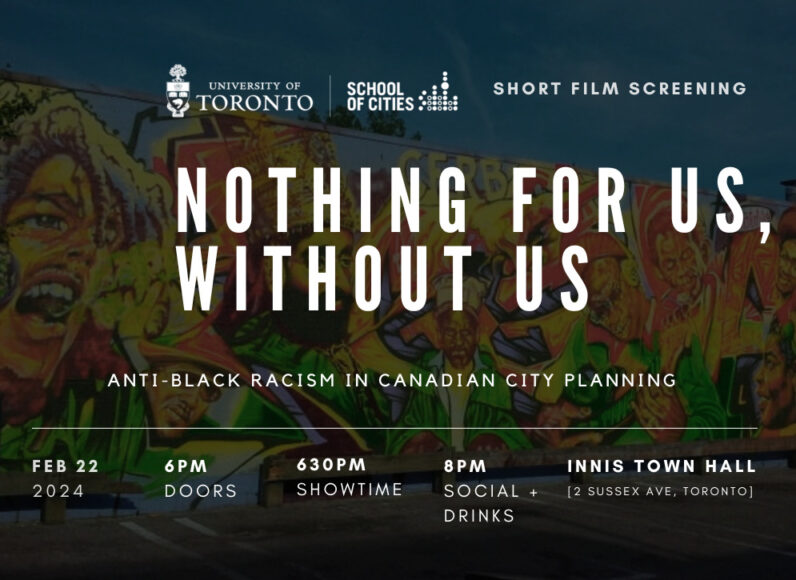During the city-wide COVID-19 lockdowns in 2020-21, the use of parks in Toronto nearly doubled. This increased usage rate has been maintained in a post-pandemic context, indicating the value that parks bring to communities in the city.
The day I turned 14 – March 17th, 2020 – was also the first day of the official lockdown in Toronto in response to the COVID-19 pandemic. As a kid in eighth grade who just wanted to have fun at school with his friends and play basketball on the weekends with his teammates, I was devastated. Acknowledging that others were much more severely affected by the pandemic, I still found it to be an incredibly challenging period, mentally and physically, but especially socially. With both my parents working and no siblings to play with, I spent most of my days sitting alone in my room signing on and off of Zoom calls. It was a depressing time, but there was one thing that helped me get through it: pickup basketball.
Once some restrictions were lifted, and parks opened to the public, my teammates and I started playing basketball at local outdoor courts. It was an amazing opportunity for me to stay in shape and healthy, and to stay socially connected. I remember thinking during TTC rides home from various parks and courts across the city how grateful I was to be living in Toronto – a city whose public services were providing me with a sense of community during a time when most of the world was isolated. This was true for me, but did others share this experience?
The answer appears to be yes. Using a GIS dataset compiled from eleven of the most used parks and outdoor recreational spaces and seventeen indoor recreational spaces, and combining this with location-based mobility data derived from cell phones to track activity within those areas, I was able to estimate monthly usage rates from January 2019 to December 2022.
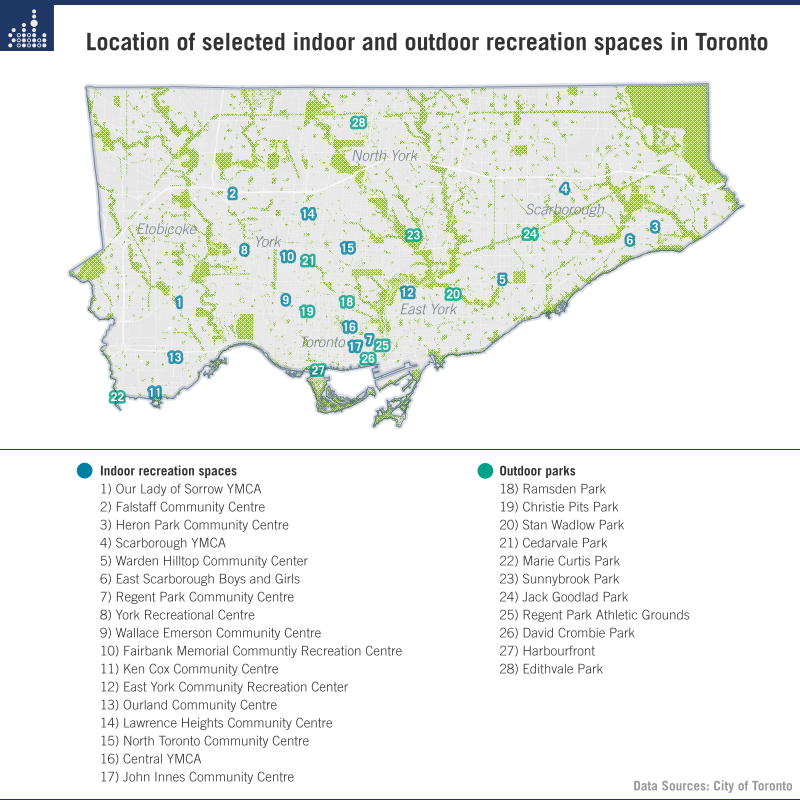
Usage of indoor services was very strongly correlated with the severity of the lockdown restrictions at the time. The data shows that usage plummeted between March and April of 2020, continued to stay relatively low, and then spiked in late 2021 and early 2022 as indoor spaces started to open up and restrictions were lifted. This was relatively unsurprising.
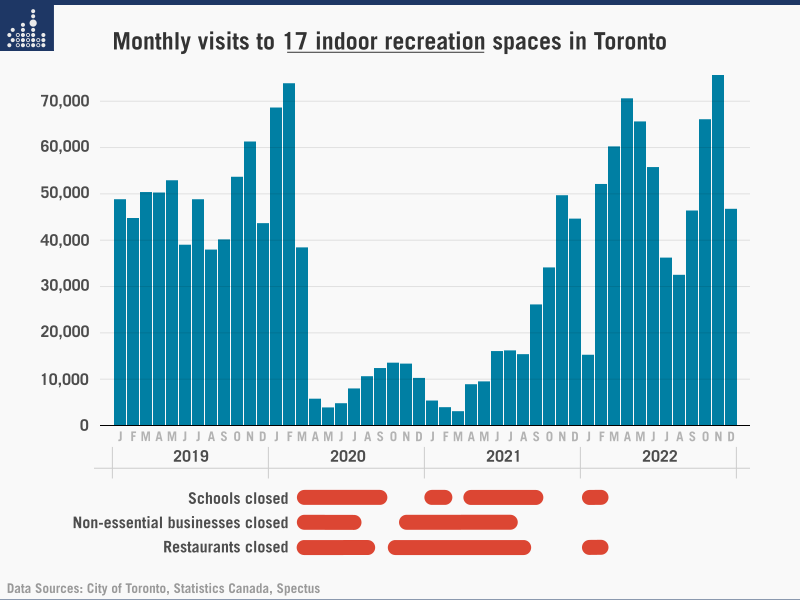
More interesting trends emerged in the usage of outdoor parks during the same period.
As one might expect, the usage of parks and outdoor services fluctuates seasonally, peaking in the summer and spring months and bottoming out over the winter. While the use of outdoor services stayed around the same level in 2020 as it had been in 2019, in 2021, once the most severe restrictions were removed (i.e. ones that limited participation in outdoor activities), park usage nearly doubled. With indoor services closed, it appears that people found alternative ways to engage in activity, by leveraging outdoor facilities more. Most notable, however, is that even after restrictions were removed and the usage of indoor facilities returned to pre-pandemic levels, the near 100% increase in outdoor park usage continued into 2022.
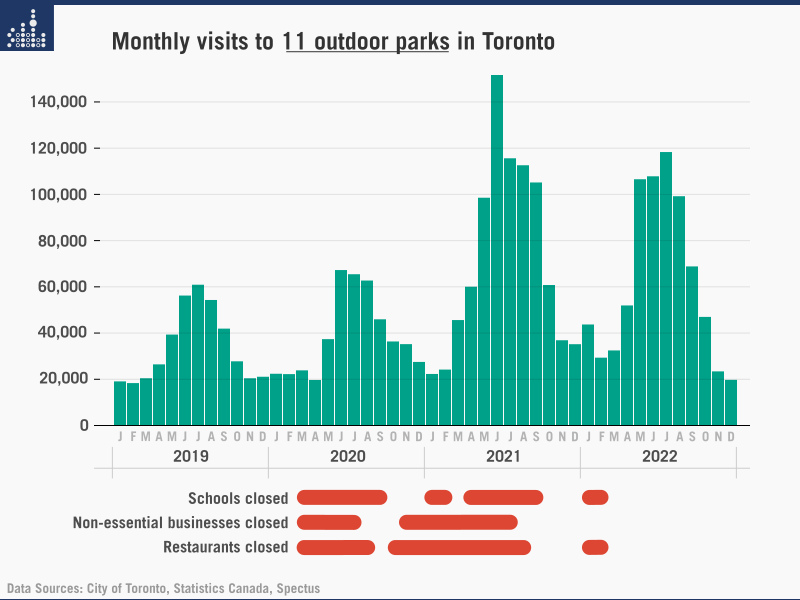
Why is this development so important?
The pandemic presented circumstances that changed the way people engage in public and private services. For example, the inability for consumers to shop in person placed incredible strains on small local businesses, but allowed online consumption and e-commerce to thrive. It seems as though something similar took place with the use of recreational services. During the lockdowns, Torontonians were unable to use indoor services and therefore changed their behaviours and habits. Importantly, these changes appear to have been maintained in a post-pandemic world; there is similar demand (i.e. pre-pandemic levels) for indoor services but significantly more demand for outdoor services than ever before.
The courts that my friends and I played on, and their surrounding parks, are foundational to many communities – but their overall condition was often less than adequate. I mentioned how grateful I was to have access to Toronto’s public services over the pandemic –could the city be doing more to support them now, given what we know about usage rates?
The City of Toronto’s yearly budgets show that, when adjusted for inflation, government spending on parks and recreational services has flatlined, if not decreased, over the last six years. These services are in higher demand, and the City of Toronto should recognize this.
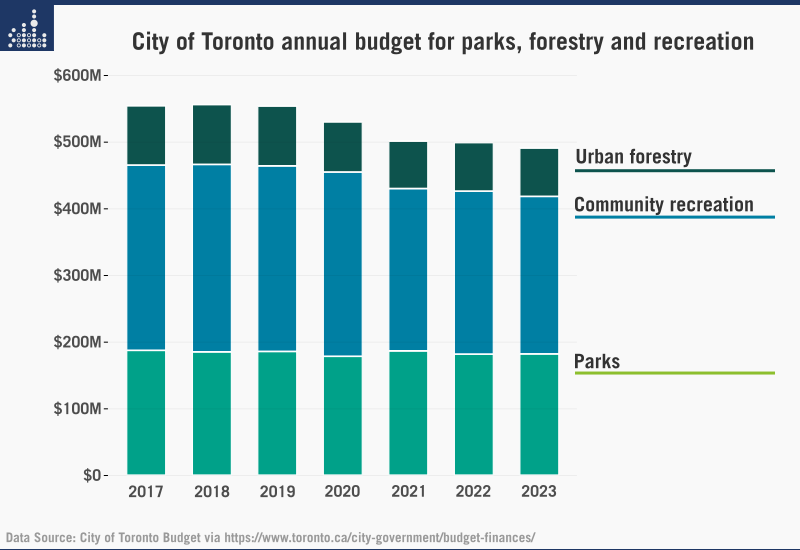
In a conversation with Perry King, a freelance journalist and author of Rebound, which focuses on the role of sports in building community, I inquired about how community services, such as parks, receive funding for maintenance or general improvements. He explained that city officials are hesitant to provide funding to services without proof of their importance; in other words, they needed a guarantee of a return on investment. Furthermore, the “proof” that they require extends beyond anecdotes and personal testimony. For many communities, the collection of data and quantitative evidence that the city demands are difficult to produce. We now have that data. It suggests that COVID-19 “changed the game” for recreational services, a development that must be acknowledged and acted upon.
Jeff Allen helped create the charts on this page. He also took the photo of the basketball court at Stanley Park shown at the top of this page.






